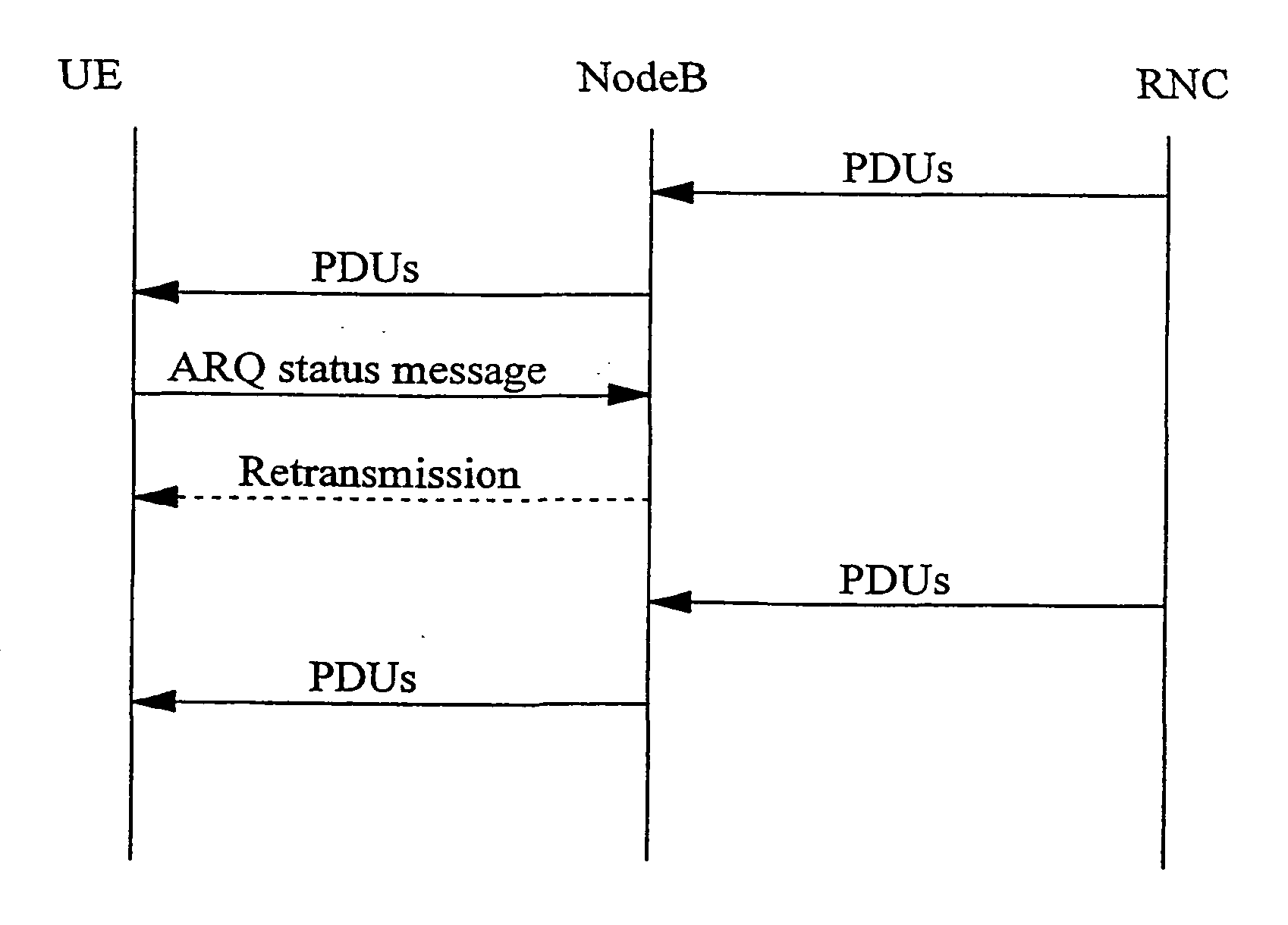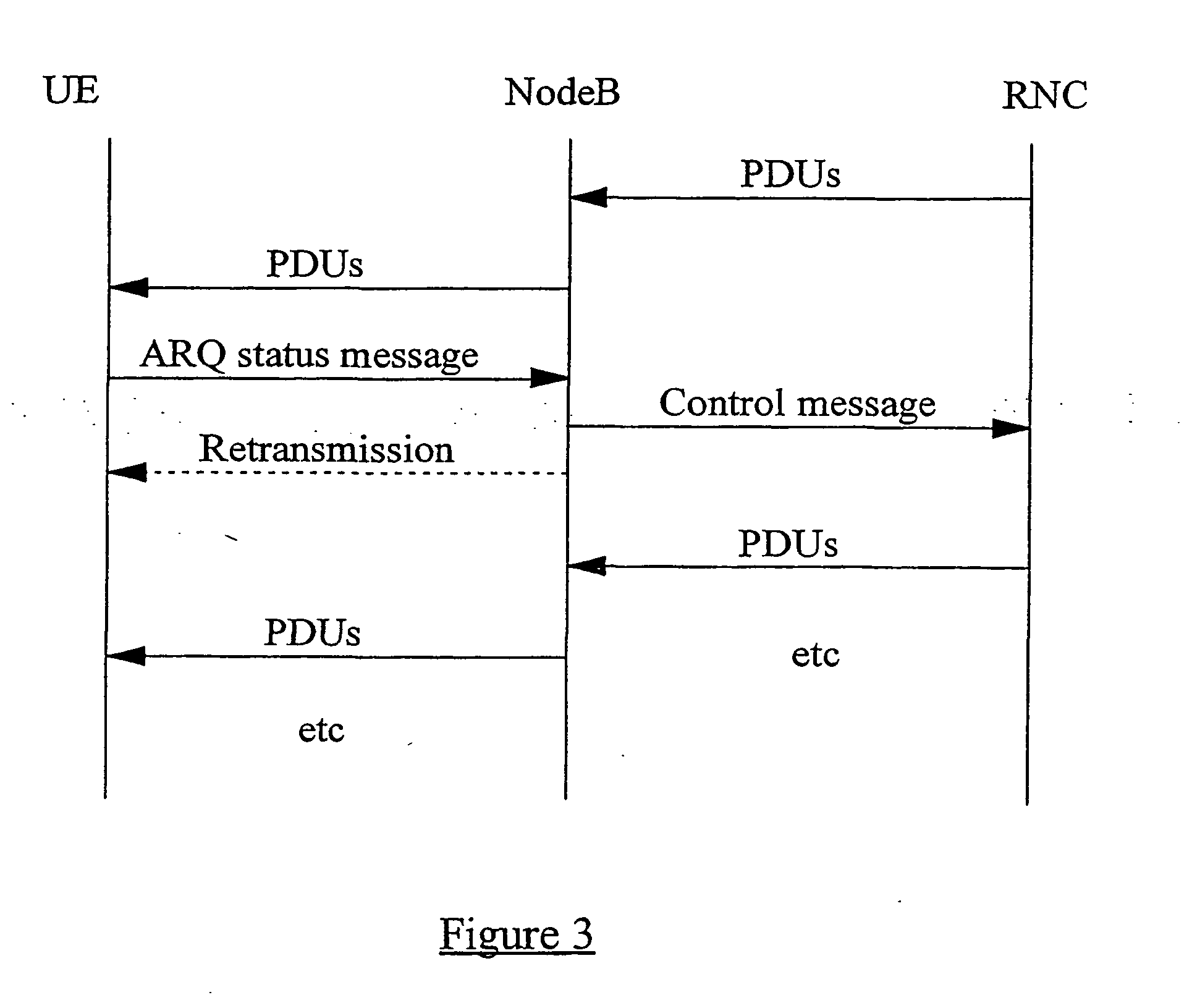Flow control in a radio access network
a radio access network and flow control technology, applied in the field of flow control in radio access networks, can solve the problems of reducing the effectiveness of the harq mechanism and the size of the buffer at the nodebs, and achieve the effect of reducing the duplication of data transmissions, and minimising the buffer siz
- Summary
- Abstract
- Description
- Claims
- Application Information
AI Technical Summary
Benefits of technology
Problems solved by technology
Method used
Image
Examples
Embodiment Construction
[0020] The Radio Access Network (RAN) of a UMTS mobile telecommunications network has been described above with reference to FIG. 1. The HARQ mechanism for facilitating the retransmission of unsuccessfully sent data to a mobile terminal, and proposed for the new DSCH-E channel, has been described with reference to FIG. 1. An embodiment of the present invention will now be described with reference to FIGS. 1 and 3.
[0021] In order to reduce the amount of data buffered at a NodeB for a given mobile terminal, it is necessary for the RNC serving the mobile terminal to know both how much data the NodeB is capable of handling at any given time and which data has already been successfully sent by the NodeB to the mobile terminal over the air interface. This is achieved by introducing a flow control mechanism between the NodeB and the RNC specified using a new protocol identified here as Iub+frame handling protocol (Iub+FH). There remains a need for buffering "above" the NodeB, and this will...
PUM
 Login to View More
Login to View More Abstract
Description
Claims
Application Information
 Login to View More
Login to View More - R&D
- Intellectual Property
- Life Sciences
- Materials
- Tech Scout
- Unparalleled Data Quality
- Higher Quality Content
- 60% Fewer Hallucinations
Browse by: Latest US Patents, China's latest patents, Technical Efficacy Thesaurus, Application Domain, Technology Topic, Popular Technical Reports.
© 2025 PatSnap. All rights reserved.Legal|Privacy policy|Modern Slavery Act Transparency Statement|Sitemap|About US| Contact US: help@patsnap.com



